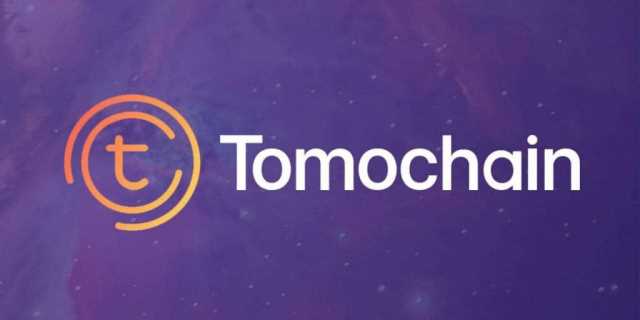For example, Account A will release Asset X once it has received Asset Y from Account B. This could make property sales or the transfer of ownership faster and less liable to fraud. One major difference between Bitcoin and Ethereum is the consensus mechanisms they employ to run their respective blockchains. They are the biggest names in crypto, and their combined market capitalization equals more than 60% of the $1 trillion crypto market.
DeFi Participation
It’s expected to happen by the fall of 2022, but there are no guarantees that this will happen on time or without issues. You can earn from staking ETH, but will not be able to use it for anything else until after the Merge. Many Play-to-earn blockchain-based games, including Decentraland, Axie Infinity, and League bitcoin vs ethereum of Kingdoms, are built on the Ethereum blockchain. The games also enable the network and ETH to benefit in the Metaverse. Launched in 2015, the Ethereum blockchain started as a PoW blockchain. However, as a PoS blockchain, Ethereum has ceased to rely on miners to validate transactions and switch to validators.
What are the Main Differences between Bitcoin and Ethereum?
The preference between them depends on specific use cases and investor inclinations. Both cryptocurrencies have witnessed significant growth and adoption, underlining the potential of cryptocurrency and blockchain technology. Yes, Bitcoin and Ethereum can coexist as they serve different purposes. Bitcoin is seen as a store of value or “digital gold,” while Ethereum is a platform for building decentralized applications and executing smart contracts.
Supply and Mining
Like just about every other cryptocurrency (with the exceptions being those designed to tie to the price of fiat currencies like sterling and the US dollar). Or you could even consider investing in assets that are not closely correlated to crypto or traditional markets at all like Masterworks. If you’re looking for a more established cryptocurrency with a proven track record, then BTC may be a better choice. This means that its value will not be eroded over time like fiat currencies. Additionally, BTC is not subject to the whims of central banks or other financial institutions. This gives it a great deal of stability and makes it an attractive investment for those looking for long-term growth.
Block Time and Transaction Speed
Ethereum, on the other hand, was developed as a versatile platform supporting not only a digital currency but also smart contracts and dApps. Overall, Bitcoin focuses on being a digital currency and store of value, while Ethereum provides a robust platform for creating and executing transactions that facilitate the movement of value. The Bitcoin and Ethereum blockchains and networks are different concerning their overall aims.
- But Ethereum, increasingly, is also finding its way into mainstream parlance.
- However, when you send someone a BTC, the transaction is recorded on the blockchain, and the BTC is transferred from your account to the recipient’s account.
- This section will cover the technical features of the networks and contrast them with one another.
- If you’re looking for a more established cryptocurrency with a proven track record, then BTC may be a better choice.
- The emission is deflationary and equates to a diminishing issuance over time.
- Proof of Stake (PoS) uses validators to verify transactions and add new blocks to a blockchain.
In summary, the financial landscape of Bitcoin and Ethereum is woven with trends in market capitalization, investment behaviours, and external economic factors. As these cryptocurrencies continue to evolve and intersect with broader financial markets, their trajectories will likely be influenced by a mix of technological advancements, regulatory decisions, and shifts in investor sentiment. Understanding these dynamics is crucial for anyone looking to navigate the intricate world of crypto investing. Ethereum’s ability to support complex smart contracts and its pivotal role in the DeFi space underscore its position as a dynamic and influential platform in the blockchain community.

Fees and Transaction Costs
In September 2022, Ethereum moved to proof of stake (PoS), a set of interconnected upgrades that made Ethereum more secure and sustainable. To address issues regarding scalability, part of the transition to proof of stake is danksharding, which will continue to be addressed through future updates. Ethereum enables developers to build and deploy smart contracts and decentralized applications (dApps) without downtime, fraud, control, or interference from a third party. To accomplish this, Ethereum comes complete with its own programming language that runs on a blockchain.

Ethereum’s Smart Contract Capabilities
- However, Ethereum’s transaction fees have often been higher than bitcoins.
- The next milestone on Ethereum’s roadmap is the full implementation of Danksharding, which is expected to consolidate and amplify the benefits of proto-danksharding, further boosting the network’s capacity and efficiency.
- Developers can deploy arbitrary applications written in Solidity, a programming language designed specifically for Ethereum, enabling a permissionless environment for innovation.
- The article also offers investment strategies for both cryptocurrencies, such as investing in ETFs and futures, dollar-cost averaging, buying on-chain, and participating in DeFi.
- The compensation we receive from advertisers does not influence the recommendations or advice our editorial team provides in our articles or otherwise impact any of the editorial content on Blueprint.
At the outset, the original cryptocurrency’s designers wanted to help people to send and receive payments without an intermediary, such as a bank. However, whether Ethereum can “beat” Bitcoin depends on the criteria used, such as coin price, transaction speed, security, or usage. The more crypto someone stakes, the greater their chances of being chosen to validate a block of transactions to a blockchain and earning rewards. The system also discourages bad actors with financial penalties for malicious behaviour. Since everyone can see on their copies of the ledger that you’ve spent your BTC, any attempt to spend the same BTC again would be invalidated by the network. The consensus mechanism ensures that all participants agree on the validity of transactions.

As we continue to consider Bitcoin vs. Ethereum, it’s undeniable that both cryptocurrencies bring unique value propositions to the digital economy. Their market performances make the choice to buy Bitcoin or Ethereum quite tough for investors because they both present strong cases. Ethereum’s transition to the PoS system has made it significantly less energy-intensive, replacing miners with validators who stake their crypto holdings to gain the ability to create new blocks. Dapps on Ethereum allow users to utilize ETH and other crypto assets in various ways, including as collateral for loans or to earn interest when lent to borrowers on defi protocols. Bitcoin’s underlying technology, the blockchain, serves as an unchangeable ledger, recording every transaction across a distributed network of nodes while leveraging cryptographic techniques to ensure its security and integrity.


